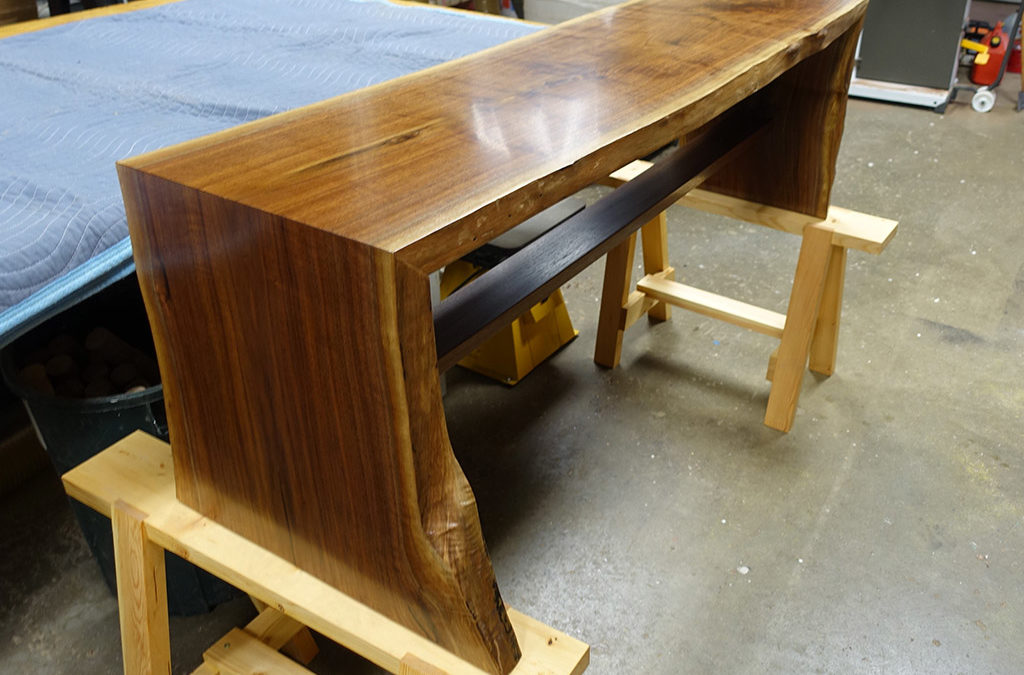On the whole subject of live edge slabs, I have come late to the party. Having been steeped (exposed early) into traditional woodworking, I just did not see the point. I felt like the live edge work that I saw was naïve and minimalist and just kind of lazy somehow. I was aware of that movement’s patron saint, George Nakashima, but still thought that it distilled down to a gratuitous display of massive chunks of wood and a perverse avoidance of refinement in form. Retro-precious, I guess.
Gradually, I have come around and have reached an accommodation that makes sense to me. And, by the way, I have read and do appreciate the insights of George Nakashima. Regardless of what I think about the direction of his work, he is a profound thinker whom along with a handful of others has inspired many non-woodworkers to become just that. Kudos, Mr. Nakashima. He also has the best woodworking book title ever, The Soul of a Tree.
My rejection of this form continued until very recently occasionally morphing into new objections. I think that my most recent diatribe had to do with what looked to me like kind of a fetish of displaying large chunks of wood (the more distressed, the better) gleamingly finished, on say, spindly steel hairpin legs. I was expressing (venting) these thoughts to my friend, wood supplier and sawyer extraordinaire, Scott. I summed up with … “and it just doesn’t say woodworking to me!”
Scott thought for a minute, looked at me and said, “Well, it doesn’t NOT say woodworking.” I am not going to tell you that I was transformed upon the spot, but this infusion of insightful and Simpson-esque logic had an effect. I continued to think about the conversation until one day, like the sun coming out I realized that if I didn’t like that formula, I could change it to suit myself. Was that so hard?
What I am doing now is an attempt to appreciate the beauty and sensual appeal of wood with some “natural conformations” featured coupled with classic construction techniques. There is nothing particularly cutting-edge or revolutionary about this, it is just combining elements that I find pleasing and I hope that you do as well. Thanks, Scott.

